
The landscape of the Holbrook region broadly consists of undulating hills of Ordovician metasedimentary rocks and Silurian granites in the east, and flat to gently undulating alluvial floodplains of the Billabong Creek and its tributaries in the west. Major soil types are Kurosols (strongly acid duplex soils), Chromosols (duplex soils), Kandosols (structureless soils) and Dermosols (structured soils) on the slopes; Sodosols (sodic duplex soils) in the drainage depressions and on the older alluvium of Billabong Creek; and Chromosols and Dermosols on the more recent alluvium. Swamps and minor areas of gilgai on the floodplain consists of Grey Vertosols (cracking clays). More information can be found in the Soil Landscapes of the Holbrook-Tallangatta 1:100 000 Sheet report and map.
The major soil constraint affecting productivity in pasture and cropping systems in our region is acidity, in particular subsurface acidity. Over the years, we have partnered with various research organisations and farming system groups on research projects looking at ways to address soil acidity in our region. For over 10 years we have also run a soil testing program for farmers and we actively use this data to monitor the trends in soil properties over time. See our ‘Soils Program’ below for more information on our current and past projects.
Soil acidity affects more than 50% of intensively used agricultural land in NSW and approximately 23% in Victoria, and is especially prevalent in the higher rainfall areas in our region. If we do not address acid soils now, further acidification will threaten future agricultural production.
Recent research on soils in the NSW Southern Slopes suggests that in most cases, current rates of lime application are not addressing the current soil acidification rate. An effective liming program should aim to increase soil pH (CaCl2) to a target of 5.5 in the top 10 cm, not 5.0 as has been the current practice. This will provide sufficient lime to raise pH in the surface soil and allow for excess lime to leach into deeper subsurface layers (5 – 20 cm) and slowly increase pH at depth.
Lime that is top-dressed moves very slowly into the subsurface layers, depending on soil type, rainfall and lime application rate. It is known that effective incorporation of the lime after spreading ‘speeds up’ the reaction of lime with the soil, to the depth of cultivation.
HLN in conjunction with NSW DPI have set up two new trial sites that will be looking at these questions – different liming rates, top-dressing lime vs incorporating and the effects on crop and pasture growth. Another issue being looked at is pH stratification – acidic layers in the soil that may be impacting crop and pasture growth but are not being detected by traditional soil tests that bulks samples into 10 cm intervals. A background on each of the projects is provided below.
HLN’s Acid Soil Management Strategy
‘FutureSOILS’ 2020 – 2023
The ‘Future Soils’ project is funded by the Australian Government’s National Landcare Program to improve on-farm management of acid soils. The project is managed by FarmLink and is a collaboration between NSW DPI, the Australian National University, FarmLink, Holbrook Landcare Network, Central West Farming Systems, K-Line Ag and Westlime.
HLN is hosting one of the five trial sites for the 3-year project, a replicated farm-scale site at Burrumbuttock. The trial consists of 7 treatments investigating 4 different liming rates of 0.5 t/ha, 1 t/ha, 2.5 t/ha and the ‘one-in-a-generation’ 6 t/ha, as well as the effect of lime incorporation compared to surface applied. A total of 28 plots (7 treatments replicated 4 times), 70 m × 9 m in size, were marked out in early 2020 and NSW DPI used their direct drop spreader to apply the lime on the plots.
For more information click here for the project flyer
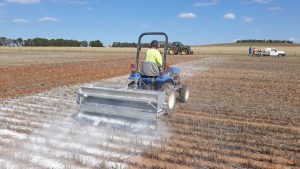
‘New approaches to tackling soil acidity in perennial pasture systems’ 2019 – 2021
The ‘Tackling Soil Acidity’ project, is a 2-year project funded by the Australian Government’s National Landcare Program, with contributions from HLN, NSW DPI and the Grasslands Society of NSW Inc.
The main components of this project will:
- Introduce new soil sampling practices to detect and monitor subsurface acidity.
- Use large-scale acid soil management sites to test a combination of different lime rates, with and without incorporation, and investigate the impact of different soil pH targets on ameliorating subsurface acidity in the short term. In the long term we aim to attract future funding to monitor pasture response to the range of pH profiles created by the various treatments; and
- Survey perennial pasture paddocks to identify the current status of soil pH in layers from depths of 0-30 cm. Geolocated sites to be established as long-term monitor sites to track acidification over time.
Acid soil management site
HLN and NSW DPI are managing a trial site located in a paddock on ‘Boorook’, near Morven. This site was selected for this experiment as it has no previous liming history and has uniform soils across the paddock that are severely acidic ( pHCa < 4.5; Exch Al. > 20%) to depth.
The trial site was established, and lime spread in October 2019. The trial consists of 7 treatments investigating lime rates and the effect of lime incorporation (Inc) to a depth of about 10 cm with disc harrows, compared to surface applied (SA). The treatments were decided by the project steering committee made up of local producers, advisors, LLS representatives and the project research team. The amount of lime applied, was determined by the starting pH and ECEC and the target pH. The details for each treatment are below:
(i) Nil lime (Control)
(ii) Treatments 2 (SA) and 3 (Inc); 4t/ha lime targeting pHCa > 5.5 in the 0-10 cm depth;
(iii) Treatments 4 (SA) and 5 (Inc); 3t/ha lime targeting pHCa > 5.2 in the 0-10 cm depth (i.e. approximating current industry recommendations);
(iv) Treatments 6 (SA); 2 t/ha lime aimed at increasing pHCa of the surface 0-5 cm layer > 5.5; and
(v) Treatments 7(Inc); a ‘once-in-a-generation’ application of 6t/ha lime targeting a pHCa > 6.0
A canola hybrid was sown at the site in 2020, and wheat was sown in 2021.
‘Managing soil acidity in permanent pastures’ 2021 – 2028
The Meat & Livestock Australia (MLA) funded Producer Demonstration Site (PDS) project – ‘Managing soil acidity in permanent pastures’ is investigating top-dressed liming strategies in non-arable pasture systems where lime incorporation is not possible or preferred. In February 2021, HLN and NSW DPI established two new lime demonstration sites on properties near Holbrook and Mannus with funding from the ‘Tackling Soil Acidity’ project. The MLA PDS funding, secured in March 2022, will enable these two sites to continue with money going towards annual soil testing, pasture measurements and field days. Some funds will also go towards establishing a third demonstration site at Rosewood.
The sites at Holbrook and Mannus are different to our lime sites at Burrumbuttock and Morven that are currently in a cropping phase and are testing different lime rates, with and without incorporation. The Holbrook and Mannus sites include 4 treatments with 4 replications;
(i) Nil lime (Control)
(ii) Treatment 2; 3t/ha lime targeting pHCa >5.2 in the 0-10cm depth (i.e. approximating current industry recommendations);
(iii) Treatment 3; 5t/ha lime targeting pHCa >5.5 in the 0-10cm depth;
(iv) Treatment 4; a ‘once-in-a-generation’ application of 7t/ha lime targeting pHCa >6.0
The treatments were decided by the project steering committee made up of local producers, advisors, and the project research team.
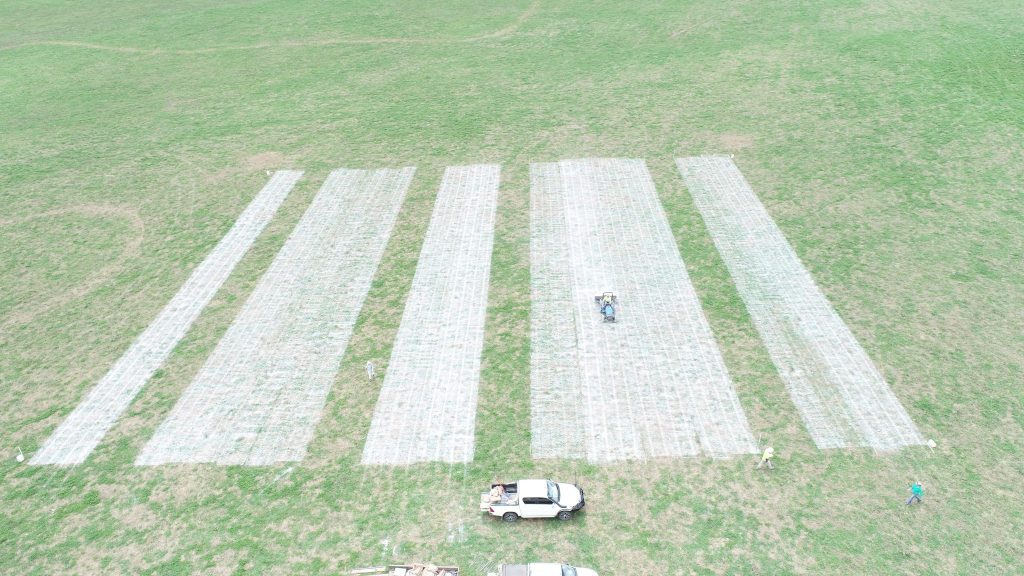
‘Soil monitoring of acid soils’ 2017 – 2020
The aim of the ‘Soil Monitoring of Acid Soils’ project, funded by Murray Local Land Services, was to monitor changes in soil pH and fertility over time at selected sites across the Murray region and consider the management practices that have influenced these changes. The project was a follow on from the 2017 ‘Sub Clover Nodule Health Project’ that collected baseline soil data and assessed the nodulation status of pasture legumes from 40 sites sampled in September 2017. In March 2020, 31 of these sites were resampled to monitor changes in soil properties. Paddock management information such as production outputs and liming and fertiliser inputs was collected from landholders to gauge the effect that these factors may have on soil pH and fertility status. The nodulation status of legumes was not assessed in this project, due to the unfavourable seasonal conditions in 2019.
A factsheet detailing the key findings of the project can be found on our ‘Resources’ page.
‘Innovative approaches to managing subsoil acidity in the southern grain region’ 2016 – 2020
Subsoil acidity is a major constraint to crop productivity in the high rainfall zone (500-800 mm) of south-eastern Australia. Soil acidification is accelerated by: nitrate leaching under certain crop rotations, the use of ammonium-based fertilisers, and the regular removal of plant products, such as grain or hay. The surface application of lime (calcium carbonate) is a common practice used to combat soil acidity. However, lime moves very slowly down the soil profile so subsoil acidity will only be ameliorated after years of regular application which is inefficient and expensive. For example, the long-term liming experiment near Wagga Wagga (known as MASTER) reported pH changes in the subsoil of 0.044 pH units per year (Li et al., 2010), indicating that it would take 23 years to raise subsoil pH by one unit when maintaining pH at ≥ 5.5 in 0-10cm depth. Indeed, at the current commercial recommended rates (2.5 tonne/ha in the high rainfall region in NSW), most of the added alkalinity is consumed in the topsoil with very little remaining to counteract subsoil acidification. Therefore more aggressive methods are required to ameliorate subsoil acidity, such as the use of non-acidifying fertilizers or the deep-ripping of lime with or without other novel amendments to achieve more rapid changes to pH at depth.
The objective of the ‘Managing Subsoil Acidity’ project was to assess and develop innovative techniques to improve efficacy of liming, such as the deep placement of lime with inorganic or organic amendments.
HLN and NSW DPI managed 2 trials at ‘Teripta’ and ‘Billa’ near Holbrook. The trials ran for 3 years under crop. The ‘Teripta’ site ran from 2016 to 2018 with the crop sequence – canola-oats-faba beans. The ‘Billa’ site ran from 2017 to 2019 under a wheat-canola-wheat rotation. The treatments were applied prior to the first year’s crop. The details for each treatment are below:
(i) Surface liming (Inc) targeting pHCa > 5.5 in the 0-10 cm depth;
(ii) Deep ripping only (ripping depth 30cm and spacing 50cm) and surface liming (Inc) targeting pHCa 5.0 in the 0-10 cm depth;
(iii) Deep ripping + lime (ripping depth 30cm and spacing 50cm) deep liming targeting pHCa 4.8 in the 10-30 cm depth and surface liming (Inc) targeting pHCa 5.0 in the 0-10 cm depth; and
(iv) Deep ripping + organic amendment (ripping depth 30cm and spacing 50cm) deep placement of organic amendment (lucerne pellet at 15 t/ha) in the 10-30 cm depth and surface liming (Inc) targeting pHCa 5.0 in the 0-10 cm depth
A series of factsheets detailing the findings are available on our ‘Resources’ page and on the NSW DPI website https://www.dpi.nsw.gov.au/agriculture/soils/acidity.
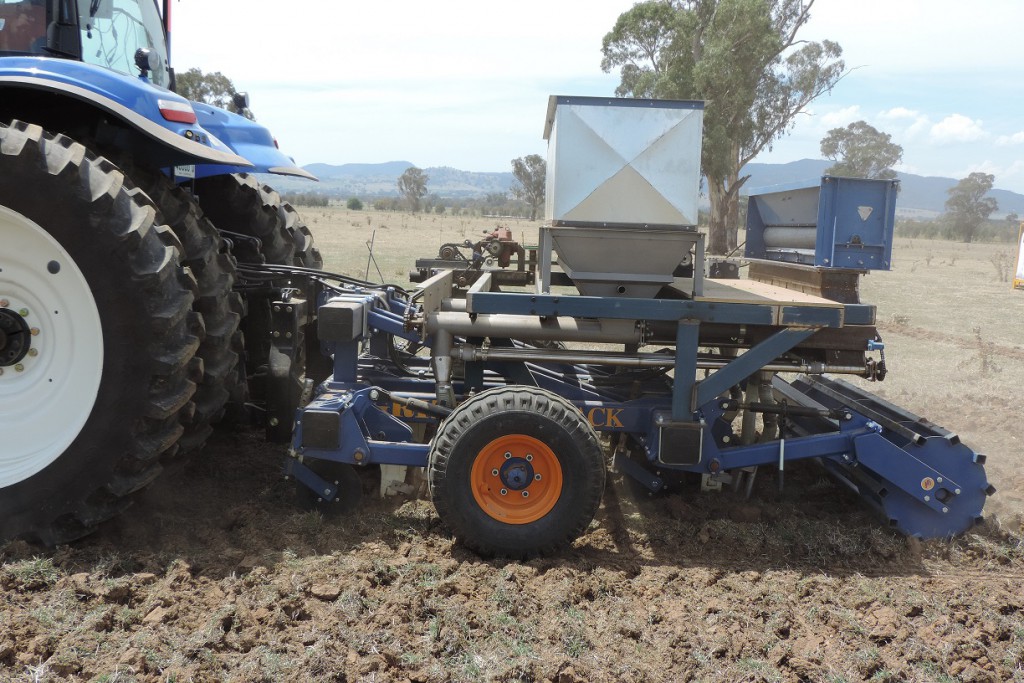 s
s
This is a 2 year project funded by the Australian Government’s National Landcare Program. In this project HLN propose to develop benchmark and extension information on key quality and health for our local soils which will contribute to our capacity to influence managers of permanent pastures and achieve better outcomes for groundcover, soil health and productivity. Soil sampling and analysis of our soils database will create a soil health snapshot for 5 of the region’s main soil types and 4 different farming systems across 3 different rainfall zones.
A four part videos series on soil health was made and these can be found on our ‘Resources’ page or on our YouTube channel.
In early August 2021, the first stage of soil sampling was completed in 16 pasture paddocks across the region (from Gerogery in the west to Tumbarumba in the east). The 16 pasture paddocks were grouped into 4 different farming systems;
- improved pasture with high fertiliser history,
- improved pasture with low fertiliser history,
- native pasture with no fertiliser history, and
- multi-species pasture with various fertiliser histories.
A range of field measurements were conducted at each site including the ‘Soil Your Undies’ test, and the topsoil (0-10cm) was sampled and sent to a laboratory for various soil biology tests. In early October 2021 the undies were dug up and assessed for level of decomposition, and the sites were resampled (to a depth of 30cm) and analysed for standard soil chemical properties. Analysis of the results is currently in progress.
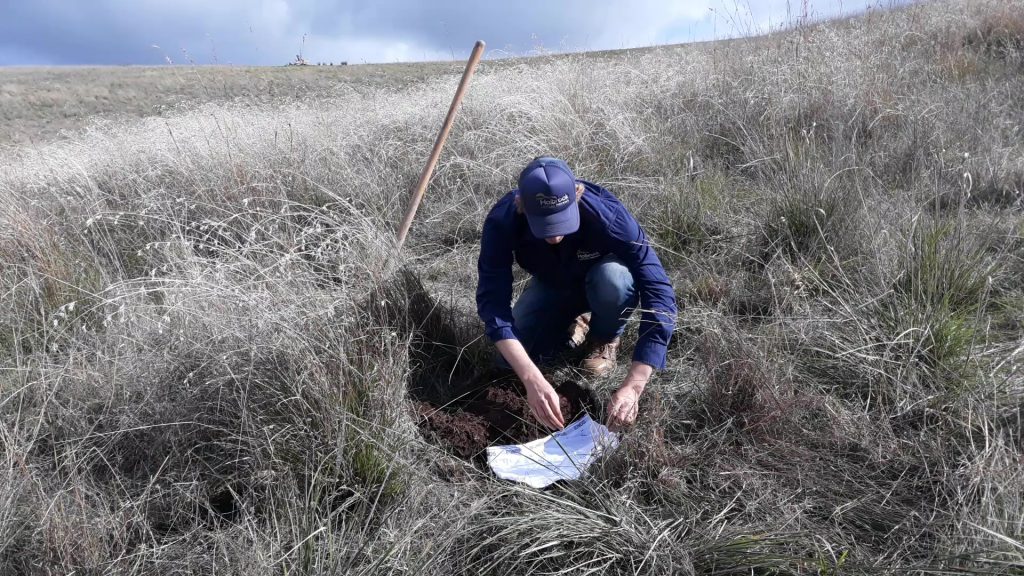
HLN have been offering the Soil Testing Program in the area since 2011. The program allows landholders in the South West Slopes & Upper Murray regions of NSW to access subsidised or discounted soil tests. Soil testing is an important tool in helping farmers make informed decisions to improve soil fertility in both grazing and cropping enterprises. The Soil Testing Program can assist you in better understanding your soil fertility; how to measure it, why it is important, interpreting the results and developing strategies for managing or improving it.
To participate in the program or for more information click on the below images.
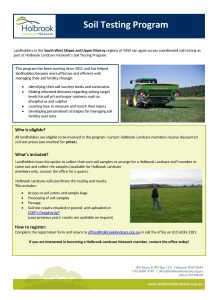
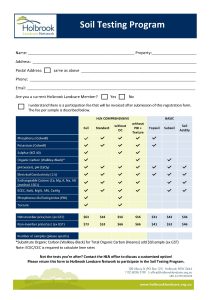
As part of the program, workshops are held in various locations to help you interpret your soil test results, develop management strategies and compare them to the district soil test results.
For information on past soils projects go to our ‘Resources’ page.
